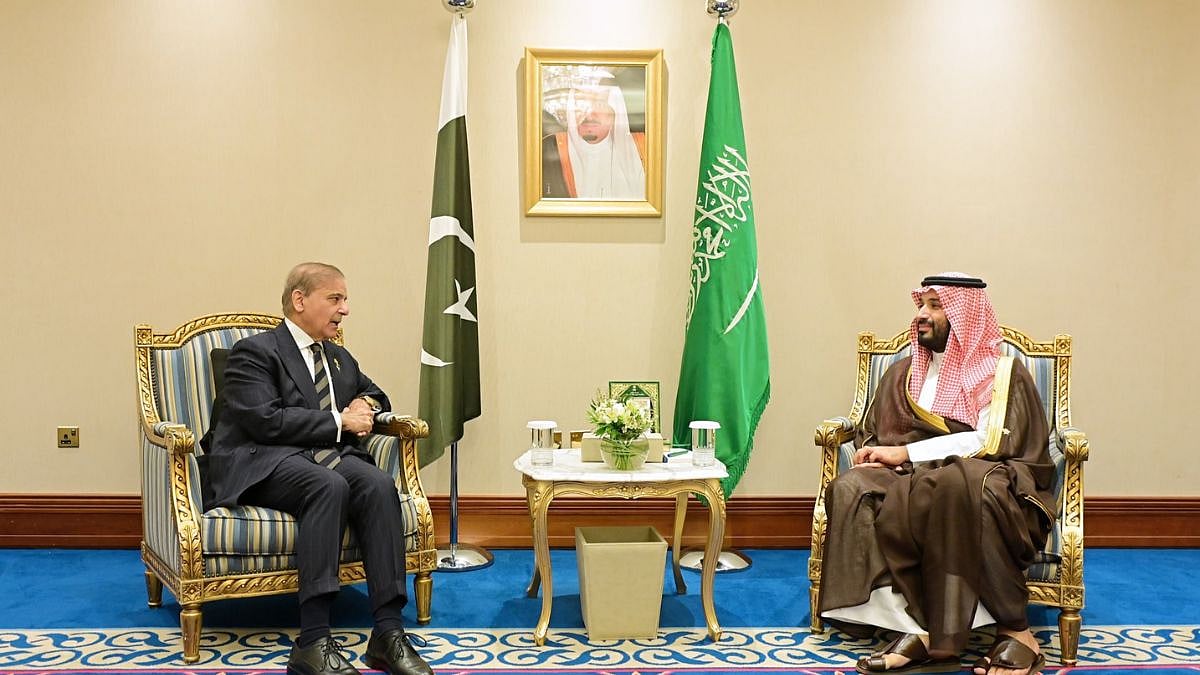New Delhi: Prime Minister Benjamin Netanyahu altered the security calculus in West Asia on September 9 when Israel launched a missile strike on Qatar. The action, which subsequently saw meetings between Gulf leaders, led to the signing of the Saudi-Pakistan Mutual Defence Agreement (SPMDA).
Signed on September 17, between Saudi Crown Prince Mohammed bin Salman and Pakistan’s Army Chief Asim Munir, the SPMDA has raised deep concerns in New Delhi, with one clause standing out: “Any aggression against either country shall be considered an aggression against both.” This has sparked speculation within India. Would the Kingdom condone and even support a possible attack by Pakistan? Is this the beginning of an Islamic NATO? And what should India’s response be?
Former ambassador to Saudi Arabia, Talmiz Ahmad, dismisses such concerns. Ahmad argues that the pact should not be viewed through an India-Pakistan lens but rather be related to wider regional concerns among Gulf nations. He explained, “The attack shows the US has become fatigued, and the region is searching for a wider security architecture. The signing of the SPMDA is the first step towards achieving this. External players such as Russia, China, and Turkey will now become more important. India should also leverage its ties to jockey for more influence in West Asia.”
### What Does the SPMDA Mean for Pakistan and India?
Geopolitics aside, the question arises: how does the SPMDA benefit Pakistan, and is it really a major concern for India?
Former High Commissioner to Pakistan, Sharat Sabharwal, dismisses the notion of a potential joint military attack in the future. He states that Riyadh “does not have a large battle-hardened army from which they can send 20,000 people to fight alongside Pakistan.” Sabharwal also highlights Saudi Arabia’s significant interests with India, especially in the economic sector where the Kingdom is trying to diversify its economy beyond oil. “That is where India offers many more opportunities than Pakistan,” he adds.
Sabharwal believes that the agreement provides key advantages to Pakistan that India needs to monitor closely. Describing the Saudi-Pakistan agreement as a “transactional one,” he notes it remains to be seen what resources Riyadh will provide Islamabad in the future. “The possibilities include providing oil on credit and parking money in the central bank to shore up foreign exchange reserves. This could ease the Pakistani economy but also give it money to strengthen its defence capabilities.”
### Historical Context and Strategic Implications
Colonel Rajeev Agarwal, Senior Research Consultant at Chintan Research Foundation, agrees with this assessment. Agarwal points out that Islamabad has inked Mutual Defence Agreements (MDAs) in the past — with little to show for it.
He references previous MDAs Pakistan signed with the US in 1954, the Southeast Asia Collective Defence Treaty (SEATO) in 1955, and the Baghdad Pact (later CENTO), also in 1955. “In all these alliances, Pakistan had two clear aims: security assistance and military hardware from the Western alliance and support during any conflict against India. However, neither in 1965 nor 1971 did any alliance partner intervene directly to help Pakistan fight India, except to provide some military hardware. Even during the 1999 Kargil war, Pakistan was largely on its own.”
Agarwal believes the new pact would enable a “closer buyer-seller partnership with the US and Turkey, indeed a happy situation for Pakistan.” He warns that this could be a definite concern for India as it may have to contest a better-equipped adversary in any future conflict.
### India’s Response and Moving Forward
Agarwal’s concerns seem to be echoed by New Delhi. At a recent press briefing, MEA spokesperson Randhir Jaiswal emphasized that India and Saudi Arabia maintain a “wide-ranging strategic partnership” and that India expects “this strategic partnership will keep in mind mutual interests and sensitivities.”
Ahmad, however, considers such concerns premature and stresses that the fine print of the agreement needs to be clarified. He also points out broader uncertainties, including China’s role: “China is a major partner with both Pakistan and Saudi Arabia. Will it play a role here?”
The last key question remains: are other Gulf countries likely to join this new security arrangement?
### Navigating the Changing Security Landscape
When asked how India could best navigate these evolving concerns, experts pointed to new forms of diplomacy.
Ahmad suggested dialogue through a revived Russia-India-China (RIC) forum as one way for India to better engage with the Gulf region. Others offered a different perspective. Agarwal stated, “In situations of conflict like those prevailing in West Asia, India needs to call out the aggressor where required, even if it means it is Israel, a key strategic ally that has stood by India through thick and thin.”
He added, “The Saudi-Pakistan Defence Pact may not have direct consequences for India, but it reflects a rapidly evolving order of which India cannot afford to sit out.”
As West Asia’s geopolitical landscape shifts, India’s ability to adapt its diplomatic and strategic approach will be crucial in defending its interests and maintaining regional stability.
https://www.freepressjournal.in/analysis/pakistan-saudi-arabia-defence-pact-beginning-of-islamic-nato
